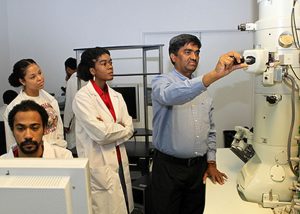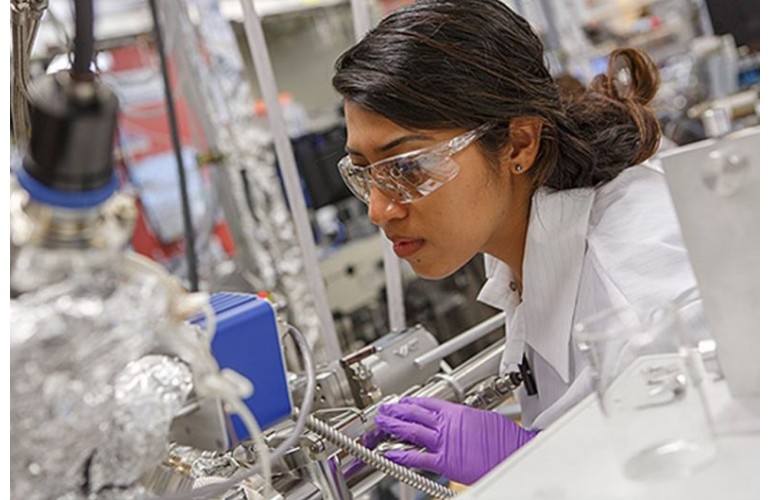 Subscribe
Subscribe- Login
-
/
Sign Up
- US Black Engineer
- >>
- News
- >>
- Tuskegee is working on disposable plastic
|
Getting your Trinity Audio player ready...
|
 The world produces 14 million tons of polystyrene (plastic foam) each year. Americans alone throw away 25 billion Styrofoam cups a year. Takeout orders account for around 269,000 tons of plastic waste in the oceans, and the amount of bubble wrap produced annually is enough to wrap around the Equator ten times.
The world produces 14 million tons of polystyrene (plastic foam) each year. Americans alone throw away 25 billion Styrofoam cups a year. Takeout orders account for around 269,000 tons of plastic waste in the oceans, and the amount of bubble wrap produced annually is enough to wrap around the Equator ten times.
It’s a ginormous problem. While paper and cardboard packing materials can be recycled, Styrofoam and bubble wrap cannot.
But there’s a small glimmer of hope. Tuskegee University researchers are working to reuse plastic waste.
“Our research addresses the serious environmental issues of dealing with these and other possible waste products,” explained Dr. Vijay Rangari, a professor in Tuskegee’s Department of Materials Science and Engineering.
This knowledge will be used to develop new polymer composites as replacements for plastics and petroleum-based materials.
Rangari is leading a five-year, $1.5 million research effort, which is part of a larger five-year, $20 million project funded by the National Science Foundation and entitled “Connecting the Plasma Universe to Plasma Technology in Alabama.” Rangari serves as a co-principal investigator of the overarching project led by the University of Alabama at Huntsville.
Plasma accounts for more than 90 percent of the universe and underpin manufacturing industries. Familiar forms of plasma include the sun, stars, lightning, neon signs, television screen displays, welders’ torches and rocket exhaust.
Tuskegee researchers will focus on plasma interactions with carbon and hydroxyapatite (a bone material) derived from natural waste materials to develop polymer composites. In addition to advances in materials development, the project will advance plasma science and technology at Tuskegee and beyond.
“Through this grant, our students — the next generation of university and industry researchers — will be trained and prepared to succeed in it after graduation,” Rangari said. “The field of plasma science and technology is rapidly advancing, as are opportunities for our faculty and students to remain at the forefront of identifying opportunities for this science.”
Grant funding will increase opportunities for multi-institutional research collaboration, industry internships for students, summer undergraduate research programs; cross-institutional courses, workshops and training sessions for industry workers, research open houses, and K-12 teacher training sessions.
The Tuskegee research team also includes Dr. Michael Curry, associate professor of chemistry and adjunct faculty member of materials science and engineering, Dr. Mahesh Hosur, head of the Department of Materials Science and Engineering, and Dr. Tcherbi-Narteh Alfred, an assistant professor in the Department of Materials Science and Engineering.
The statewide research partnership includes Alabama A&M University, Auburn University, Oakwood University, the University of Alabama, the University of Alabama at Birmingham, and the University of South Alabama.
Funding comes through NSF’s Established Program to Stimulate Competitive Research, which seeks to enhance research competitiveness of universities and other entities by strengthening STEM capacity and capability.
Rangari’s team is also looking at solutions for agricultural waste — materials remaining after fruits and vegetables are harvested and processed — also accumulate at high levels.

